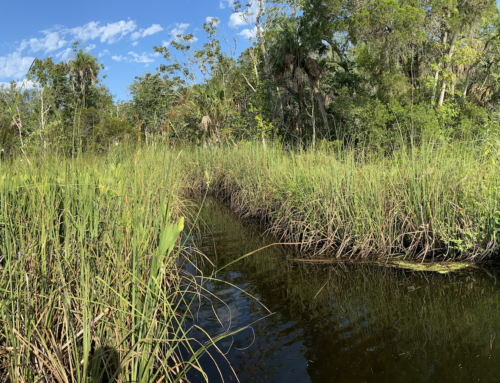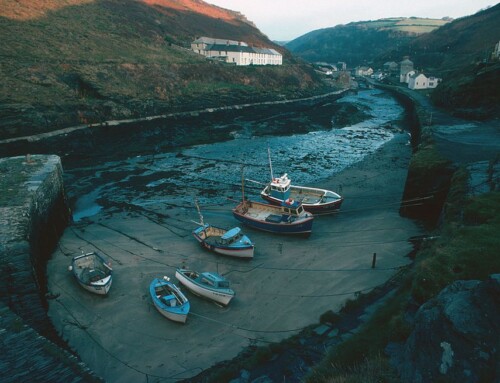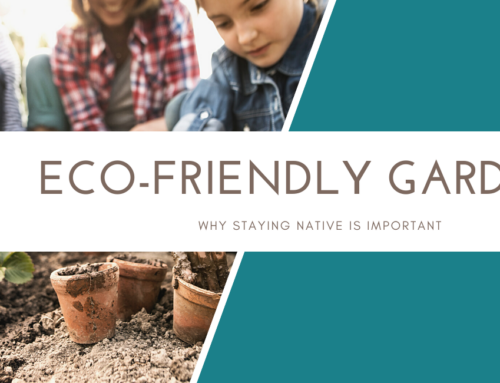Riverbed Scars
Over the summer my brother and I paddled around Kings Bay, visiting different springs like Hunters’ Spring and Three Sisters Springs. On the way to the main spring vents, there were odd sandy patches in the river bottom, forming straight lines and craters that looked like scars on a manatee’s back except on the riverbed.
https://fl.audubon.org/news/recent-report-documents-prop-scarring-florida-bay
You’ve probably seen those sandy lines along the river floor, running through the eelgrass (see picture above). These scars are caused by boat propellers. Scars can also be formed by using hooked anchors that uproot native eelgrass and leave sandy patches in the riverbed. While many boaters believe scraping the bottom is no problem, it takes time for eelgrass to grow back. Often, Save Crystal River will intervene and patch the scars before they fill with gunk and detritus.
One way Save Crystal River patches scars is by organizing workers to purchase and lay biodegradable bags in the scars. Small eelgrass plants are planted in the bags to help encourage regrowth. While Save Crystal River has contractors skilled at this healing technique, it is expensive and laborious to repair this thoughtless damage. Thankfully, boaters can easily avoid damaging eelgrass.
Props, Anchors or Manatees?
Simply by looking at the different types of floating eelgrass, one can easily identify what damaged the eelgrass. Prop damage chops the eelgrass into small 1-2″ sections. It almost looks as if the grass was put through a food processor. You can see an example below left.
When manatees graze, they rip the grass with their flippers and mouths. This causes portions of the grass to float to the surface, leaving about 6”-12” segments (see image above right). Manatees do not uproot most plants, so the eelgrass floating on the surface typically has no roots.
Unlike manatee damage, anchor damage pulls large clumps of eelgrass up from its roots (see above). Grazing manatees leave eelgrass roots intact, so the grass has a chance to regrow. Anchor damage, on the other hand, uproots entire plants and prevents eelgrass from regrowing.
Two Types of Scarring: Prop and Anchor
As mentioned earlier, there are two main types of scarring. Prop scarring occurs from a boat operating in shallow water either accidentally or intentionally. A prop scraping through the riverbed leaves those sandy straight scars. Sometimes, boaters will tilt their prop and accelerate in reverse to free their boat when grounded. In doing so, the prop blows away large amounts of plants and sand. This results in even more root damage to aquatic plants.
https://www.globalfishingreports.com/boat-anchor-types/
In terms of anchors, no matter how good of a boater you are, using a hooked anchor will harm the riverbed. Hooked anchors look like the anchors displayed above. As the boat strains the anchor line, the hooked anchor digs into the substrate. When it is later pulled loose, it often uproots entire eelgrass plants. Sometimes people will use an anchor to stop their boat, and there have also been times where people have forgotten to remove their anchor before taking off. Both actions cause serious riverbed damage and leave sandy patches throughout the river.
How to Prevent Scarring
Prop Scar Prevention
Preventing prop scars is easy: simply be aware of the river depth and raise your prop when in shallow waters. Crystal River has tides that fluctuate 5’ a day. In the morning, an area might be plenty deep to boat over, but in the afternoon that same area could be only a foot or so deep. By simply knowing the tides and looking over the side of the boat, you will not only save the riverbed but also your prop and hull. Having a depth finder is also a great way to be aware of the river depth.
Anchor Scar Prevention
There are multiple ways to prevent anchor scarring. Boaters can invest in shallow water anchors like power poles or mud anchors (spud poles). Both the power poles and mud anchors securely hold your boat in place. Wang’s Shallow Water Anchor is an example of a spud pole. It’s similar to a PVC pipe, with a spike on the end, that mounts to your boat. You can check out Wang’s Shallow Water Anchor here. Yak Gear and Power Pole also make effective mud anchors.
Instead of shredding the riverbed, shallow water anchors pierce the sandy river bottom and stabilize your boat. Power poles are a little more expensive than mud anchors, but they are also more effective. See this video for more information: https://www.youtube.com/watch?v=6HbD4lj1tjE
If you don’t want to invest in a shallow water anchor, there are other options. On a calm day, using a weight-type anchor can be effective. Unlike a traditional anchor, the weight-type anchor is a heavy object that relies on weight to hold the boat in place rather than digging into the ground. Perfect examples of this could be a cinder block or a chunk of concrete. While these types of anchors can still harm the riverbed, it doesn’t uproot eelgrass or scar the bottom nearly as badly as hooked anchors.
Why Aren’t Shallow Water Anchors More Prevalent?
Currently, there are only a few tour boat operators who use shallow water anchors. Both Explorida’s and one of the Plantation’s tour boats have power poles, and Manatees in Paradise uses a mud anchor. If I’ve missed anyone else who uses a shallow water anchor, please let me know because we really do appreciate your efforts to protect the riverbed.
People tend to favor traditional hooked anchors, and Save Crystal River is experiencing resistance trying to convert people to responsible shallow water anchoring systems. Since the law doesn’t require shallow water anchors, there is little incentive for people to change their ways, even if it would be incredibly helpful to the river.
Save Crystal River is doing everything they can to help reduce riverbed scarring. Not only have they raffled off shallow water anchors, but also they have initiated a program where qualified tour boat companies can receive money to purchase and install a spud pole anchoring system on their boat. For now, this program is only for tour boat operators, but as Save Crystal River gets more funding, the project will expand to the general public.
Save Crystal River takes riverbed scarring very seriously. Next time you’re running over a shallow patch, please raise your prop to save money, time, and the riverbed, and please consider investing in a shallow water anchor to ensure you are part of preserving the Crystal River we love.
I’ll see you on the water,
Walker A. Willis







